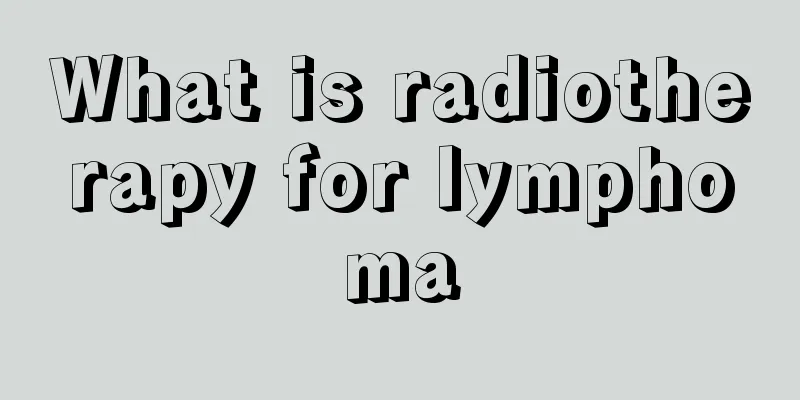How harmful is hamartoma

|
Health preservation requires following the laws of nature, working at sunrise and resting at sunset, but people nowadays don’t care about this. They don’t get up in the morning, sleep until the sun sets, and stay up at night, going to bars, surfing the Internet, and dancing in the middle of the night, which leads to imbalance of yin and yang, high incidence of diseases, and the continued rise in the incidence of hamartomas, which endangers life. Today, let’s learn about how harmful hamartomas are. Pathological examination shows that the tumors vary in size and can grow outside the kidney or to the collecting system. There is no complete capsule, but the boundaries are clear. The cut surface is grayish white, grayish yellow or mixed yellow, and some bleeding foci can be seen. Microscopically, the tumor is composed of mature adipose tissue, blood vessels and smooth muscle in different proportions, and may also be mixed with fibrous tissue. It is generally believed that the main pathological basis of tumor bleeding is that the tumor contains abundant vascular tissue, and the walls of these blood vessels are of different thicknesses and lack elasticity. The blood vessels are tortuous and can become aneurysmal, and can rupture by slight external force. Some relatively large hamartomas cause digestive discomfort symptoms due to compression of organs such as the duodenum and stomach. When a large hamartoma suddenly ruptures, the patient will experience symptoms such as waist and abdominal pain and hematuria. Patients with severe hemorrhage can touch the mass in the abdomen, and even have shock symptoms. Extrarenal manifestations: butterfly-shaped facial sebaceous adenoma, epilepsy, mental retardation, etc. In addition, there may be two other influencing factors: First, the maturity of various tissues in hamartoma varies. Some contain actively growing smooth muscle and fibrous tissue, which leads to rapid growth of the tumor and increased blood supply. Some people believe that these cells have the characteristics of myoblasts and fibroblasts, have potentially invasive behavior, and may even become malignant. Second, the rapidly growing tumor compresses the adjacent normal renal tissue while increasing in size and weight, causing atrophy of the normal renal tissue or even focal ischemic necrosis, so that a slight external force can cause the interface between the tumor and the kidney to break and bleed. Renal hamartoma is a benign lesion, but if it is not treated, the increase in size will cause loss of renal function or renal dysfunction. It is recommended to undergo surgical treatment as soon as possible. Those with symptoms often present with cough, sputum, hemoptysis, shortness of breath, chest pain, fever and other symptoms. Symptoms of hamartomas in the main bronchi, lobar bronchi, and especially in the carina area appear early, often accompanied by wheezing, and even cause severe dyspnea and cyanosis, which are misdiagnosed as asthma. Tumors located in the lobes or main bronchi cause stenosis and partial obstruction of the lumen, causing secondary infection. Most patients seek medical treatment for acute or chronic pulmonary suppuration. There are very few reports on complications of pulmonary hamartoma. For patients who need surgery, the occurrence of intraoperative and postoperative complications can be well prevented by carefully choosing the surgical method, preserving normal lung tissue as much as possible, and preventing excessive resection. However, if the tumor is large, it will cause compression symptoms on the heart, large blood vessels, and lung tissue, causing chest deformity, and may also cause complications such as pneumonia, atelectasis, and bronchiectasis, which will aggravate or complicate the condition. Nevus hamartomatosis is a group of congenital genetic diseases. The prognosis of different nevus hamartomatosis varies. The skin lesions of pigment incontinence may gradually decrease, and the pigment may fade, but the accompanying alopecia and lesions of the teeth, eyes and central nervous system often do not improve with the improvement of the skin; if symptomatic epilepsy occurs, it can be controlled and reduced by giving anti-epileptic drugs. The surgical effect of type II neurofibroma is poor and it is easy to relapse. Facial nerve paralysis and hearing loss may also occur after surgery. Benign tumors such as hamartomas may still cause serious harm. The most common harm is tumor rupture and massive bleeding. Once this happens, most patients may be forced to have their kidneys removed, and in severe cases, it may even endanger the patient's life. |
<<: What are the hazards of hamartoma
>>: What are the main hazards of hamartoma
Recommend
How to treat cracked teeth
Hidden cracks in teeth are also called micro-crac...
The liver cancer has spread to the blood vessels in the late stage. The doctor said that I can only live for three to six months. What should I do now?
The liver cancer has spread to the blood vessels....
My tongue is bitter when I wake up in the morning
If you have a bitter taste in your tongue when yo...
Can a woman with bladder cancer have a baby?
When the weather is hot, people will urinate more...
What should I do if my scalp is broken after dyeing my hair
Many people have the habit of dyeing their hair, ...
What are the complications of liver cancer
Complications of liver cancer can be caused by li...
Interpersonal communication disorder
In life, we must have a correct order for interpe...
Introduction to lesions of primitive squamous epithelium of the cervix
I believe that many female compatriots are very c...
How to eat sea buckthorn?
Sea buckthorn is a deciduous plant, a general ter...
Laryngeal cancer usually causes persistent hoarseness
Laryngeal cancer usually causes persistent hoarse...
Commonly used examination methods for colorectal cancer
Colorectal cancer is a very common digestive trac...
How to solve dull and yellow skin?
Skin is the most important tissue for people. Alt...
Life expectancy of patients with early liver cancer
Liver cancer is a cancerous disease that occurs i...
What are the symptoms of pancreatic cancer before death?
What are the symptoms of pancreatic cancer before...
Camellia pollen contains a variety of effective active ingredients necessary for the human body
Camellia pollen is one of the natural nutritious ...









